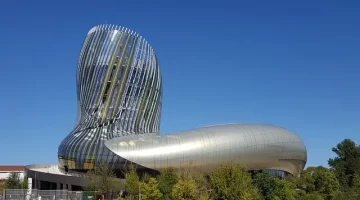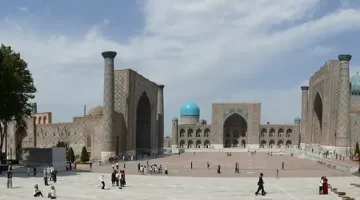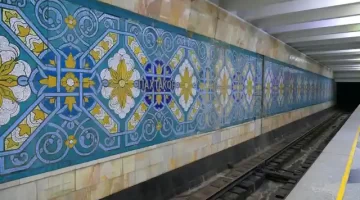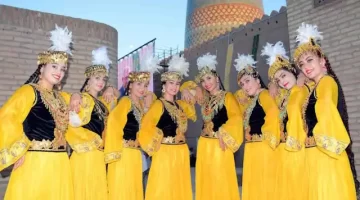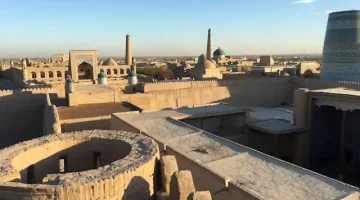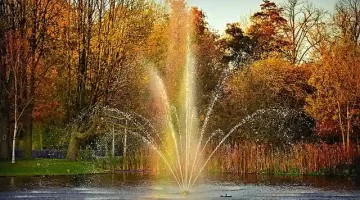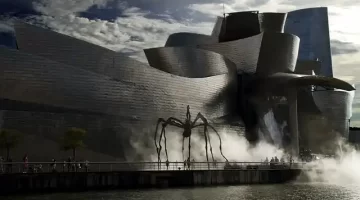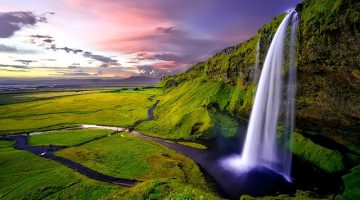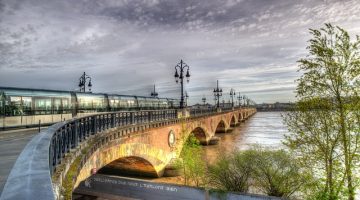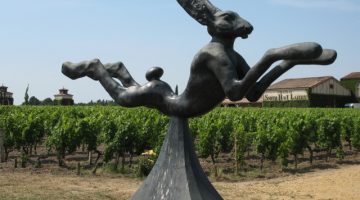In Egypt’s Sinai Wilderness
The image of the desert as a monotonous landscape is an image only held by those who have never been there.

There are vast flat patches, it is true, where the sand and rock surface looks as bare as the moon, save for the occasional straggling bush. But there are sweeping dunes too, a few hundred feet high, and rocky gorges so narrow that the sun only hits the bottom briefly at midday. There are oases, surrounded by reeds and palms, and large black Bedouin tents where the nomads settle for a while before moving on.
We were moving through the landscape of the southern Sinai desert, the triangular part of Egypt that nestles between the two fingers at the top of the Red Sea. Pilgrims had passed this way for centuries, from Cairo, from the Middle East and from even further afield, all travelling to visit this other holy land, in the centre of which stands Mount Sinai, where Moses collected the Ten Commandments. On its slopes sits St Catherine’s Monastery, founded in the 6th century and one of the oldest working monasteries in the world. Nearby is Egypt’s highest peak, Mount Catherine, reaching up to 8668ft (2642m), almost twice as high as Britain’s highest point, Ben Nevis.

We were modern pilgrims, a small group made up of worshippers come to visit the monastery and mountain, and ordinary travellers drawn to the desert and the chance to sleep under the stars and explore the wilderness. Our first night was spent on a beach in a quiet bay, a few miles south of the airport at Sharm el-Sheik, where cheap package flights bring divers in their thousands, all come to explore the submerged wonders of this coral coast. We left them behind at the airport, as we were whisked away in four-wheel drive vehicles, bags tied on top, and deposited in the early evening’s fading light into a hidden cove, with the mountains of Saudi Arabia standing high across the sea.

Our group was led by Emma Loveridge, who has been visiting the Sinai Desert for many years, and bringing organised groups here too. She and her Egyptian business partner, Dr. Rabia Barty, told us to pitch our sleeping bags and mats down anywhere, and then join them for tea around the campfire that was already burning. Our drivers – a mix of Bedouin and Egyptians – seemed to be able to produce a blazing fire from nothing within minutes of our arrival anywhere. A few minutes more and the water was hissing, poured into a huge battered kettle and the cry went up: ‘Tea is ready!’
Tea is as much a Bedouin as a British staple, as we were to discover in the following days when we visited Bedouin homes where the traditional welcome for visitors is three cups of tea in succession – though as tourists we were allowed to drink just the one.
First, though, came some simple rules of desert survival, from Emma Loveridge. ‘The main danger,’ she said, ‘is from dehydration. I want everyone to drink three or four litres of water a day. You should drink even if you don’t feel thirsty, because you will lose a lot of liquid and you must replace it. If you start to feel headachy, that could be dehydration, so pour lots of water down yourself. We carry more than enough for all of us, so take what you need.’
Equally important is the strength of the sun and the risk of burning, the answer to which is to cover up, as the Bedouin do. Though at first it seems odd, with the temperature into the 90s and sometimes beyond, that you should wear more and not less, it’s sound advice. ‘Long light-coloured cotton trousers,’ suggested Emma, ‘and long-sleeved cotton shirts. If you expose yourself to the sun, not only do you increase the risk of being burnt, but your sweat evaporates and this increases the risk of dehydration. If you cover up, you lose less liquid into the atmosphere and it will keep you cooler.
‘I’ll also tell you about snakes and scorpions,’ Emma concluded, ‘before anyone asks. They are around, but you are highly unlikely to come across one. Just avoid sleeping near bushes and rocks.’ If on our nervous first night it sounded like we had enrolled for a survival course rather than an unusual holiday, by the end of the week there had been no snake sightings and only one slight mishap: an unsettled stomach. This was quickly cured as one of our Bedouin guides walked into the seemingly empty desert and returned with a plant which he boiled up with hot water. This he gave to the sufferer, and after two cups of the unidentified herbal tea, the stomach pains subsided. The sufferer, Father Malcolm, didn’t exactly declare it a miracle but he obviously thought it was close.
After our second night in the desert, which we spent at the foot of Mount Sinai, we were feeling more confident, and knew by then that we were in a special place, not a dangerous one. A place to be treated with respect, and a place that created that respect.

We awoke with the dawn and after a fortifying breakfast cooked up by Mohammed, we set off to climb Mount Sinai. Some took the first stage by camel, but all had to walk the final steps to the top of the peak the Egyptians know as Gebel Musa, Mount Moses. It’s not as fearsome as it sounds, as the foot of the mountain is on a plateau a few thousand feet above sea level. As you near the top, the path meets the Pilgrim’s Steps, carved out of the rock by a penitent monk from St Catherine’s Monastery. True pilgrims climb the steps in silence and barefoot. The silence we could manage, as no-one had any breath for speech. Religious or not, you inevitably think of the story of Moses, climbing Sinai to receive the Ten Commandments from God. Pause and take a look around you, at the awesome peaks of the Sinai range disappearing into the hazy distance, and you can believe that it happened.

After time to reflect at the top of the mountain we descended for a lunchtime picnic at Elijah’s Well. Elijah was fleeing from Mt Carmel where the prophets had been slain by Jezebel, except for a small group which included Elijah. He fled to Bathsheba… then after 40 days and nights in the wilderness he came to Horeb, or Sinai, where he found a cave, which tradition has it is the cleft in the rock near to Elijah’s Well. We could see the cleft as we sat around the waters, eating bread, cheese, tomatoes and tuna, and sipping welcoming draughts of cool water. Martins and swallows skimmed over the pool, and in the sky a flock of Egyptian vultures whirled.
In the monastery dormitory we spent two nights, making full use of the hot showers and comfortable beds. Sleeping under the stars may be romantic, but it is also hard on the hips and back. We toured the monastery, which was built on the traditional site of the Burning Bush. The bush itself has been transplanted, and blooms healthily, well-watered by the monks and their Bedouin helpers. We lunched one day in the garden of one of our Bedouin guides, Hussein, who lives in the village of St Catherine’s. His tribe have settled here, and traditionally help the monks in their work: maintenance of the buildings, as cooks, as guides. Hussein’s children played around us, as Hussein himself baked bread on an open fire, then served us fruit picked straight from the trees.

We left the monastery for a different and even more moving experience, of camel-trekking for two days in the desert in the company of Bedouin guides. One afternoon we stop in the shade of a rock-face, with other huge rocks rising out of the desert all around us. It is time to be alone in the desert, for those who want the experience, and we all walk in different directions to each find our own shady niche, for an hour or so of contemplation. I gaze out at the desert and see then that it is not monotonous. The colours may be from a limited palate, from slate greys to a Petra rose-red, but the patterns are subtle and the variety infinite. I feel that I am in total peace, and total silence, as I look at the desert and think about this journey, and my life. Then I realise it is not silent at all. There is an underlying murmuring sound, a hum, which may be the wind, though I want to believe that it is the desert talking to me. I have seen in the shade by my foot a tiny green shoot, thin as a single piece of grass. It grows out of the sand, clinging to life. When it is time to return to the rest of the group, I open my water bottle and give it a drink. I like to think I’ll return to see it one day, grown to its full height in the desert.




